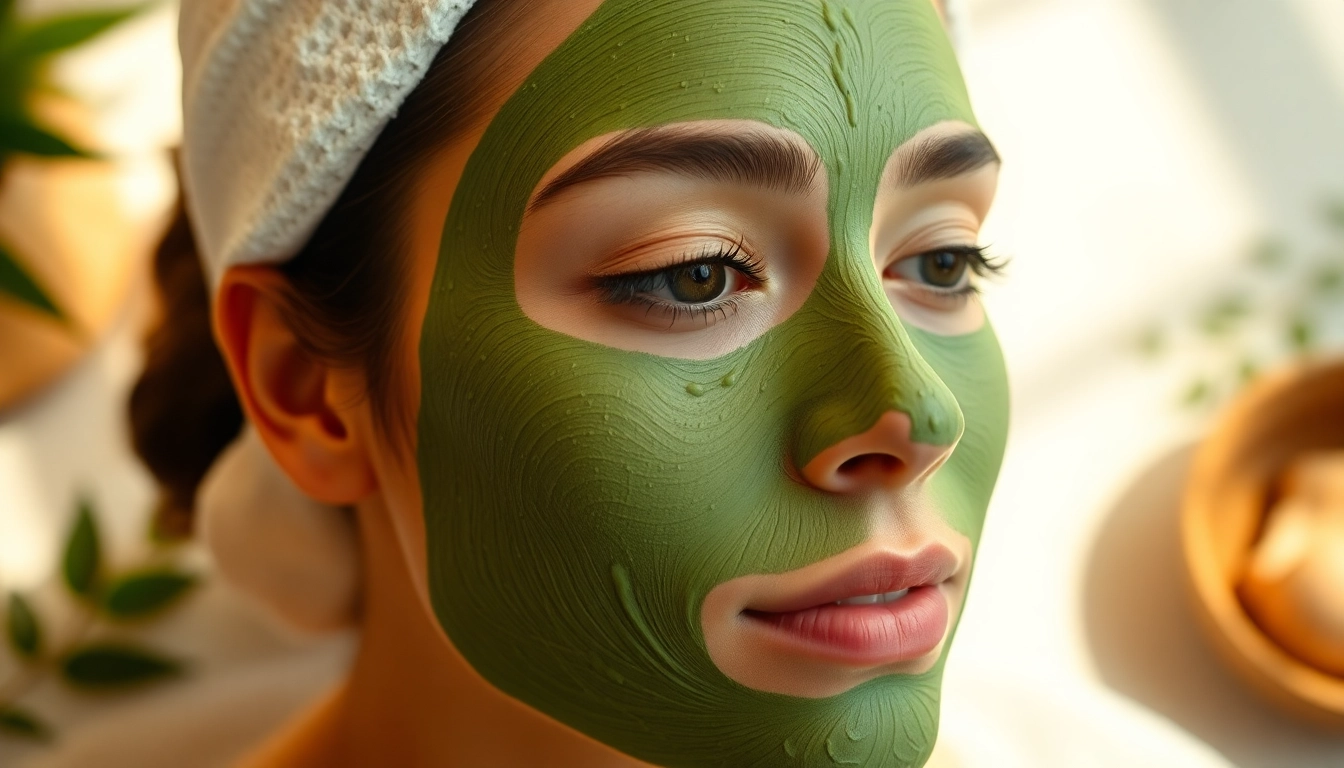Understanding Facial Masks: Benefits and Types
What is a Facial Mask?
A facial mask is a treatment product often used in skincare routines to deliver concentrated doses of active ingredients directly to the skin. Available in various forms—such as creams, sheets, gels, and clay—facial masks serve multiple functions, including hydration, exfoliation, and deep cleansing. The formulation of these masks typically includes a combination of antioxidants, vitamins, and botanicals designed to address specific skin concerns. For anyone looking to rejuvenate their complexion, facial masks can provide remarkable results when incorporated into a regular skincare regimen.
Types of Facial Masks
Facial masks can be broken down into several categories, each offering unique benefits depending on their composition and intended purpose:
- Cream Masks: These are typically rich in moisturizers and are ideal for dry skin types.
- Clay Masks: Extracted from natural minerals, clay masks are effective at absorbing excess oil and unclogging pores, making them perfect for oily or acne-prone skin.
- Sheet Masks: Infused with serums, sheet masks deliver hydration and nourishment directly to the skin while providing a cooling effect.
- Exfoliating Masks: Mostly comprised of acid-based ingredients, these masks help slough away dead skin cells for a smoother, brighter complexion.
- Hydrating Masks: These masks provide intense moisture, often recommended for those with parched or dehydrated skin.
Benefits of Using Facial Masks Regularly
Incorporating facial masks into your skincare routine can offer multiple benefits:
- Deep Cleansing: Facial masks help draw out impurities and toxins from the skin, leading to a clearer complexion.
- Hydration: Many masks are designed to deliver moisture deeply, combating dryness and leaving your skin plump and radiant.
- Skin Exfoliation: Regular use of exfoliating masks promotes cell turnover, revealing fresher skin underneath.
- Enhanced Absorption: Using a mask can prepare your skin to better absorb the nutrients from other products, optimizing your skincare routine.
- Relaxation and Self-Care: The act of applying a facial mask encourages a moment of mindfulness, contributing to overall well-being and stress reduction.
Choosing the Right Facial Mask for Your Skin Type
Identifying Your Skin Type
The first step in selecting the right facial mask is understanding your skin type. The primary skin types include:
- Normal Skin: Generally balanced, not too oily or dry.
- Oily Skin: Prone to excess sebum production, leading to shininess and breakouts.
- Dry Skin: Lacks moisture and may feel tight or flaky.
- Combination Skin: Displays characteristics of multiple skin types; often oily in the T-zone but dry elsewhere.
- Sensitive Skin: Easily irritated and prone to redness or allergic reactions.
How Ingredients in Facial Masks Affect Your Skin
Understanding the ingredients in facial masks is crucial for selecting the right product for your skin type:
- Hyaluronic Acid: Excellent for hydration, suitable for all skin types, especially dry skin.
- Salicylic Acid: Effective for acne-prone skin, as it helps to unclog pores and reduce inflammation.
- Kaolin Clay: Absorbs excess oil without over-drying, perfect for oily and combination skin.
- Aloe Vera: Soothing and hydrating, great for sensitive skin types.
- Vitamin C: Brightens the complexion and helps with anti-aging, suitable for normal to dry skin types.
Top Facial Mask Recommendations for All Skin Types
With a better understanding of your skin type and the ingredients that can benefit it, here are some facial mask recommendations:
- For Oily Skin: Consider a clay mask that includes salicylic acid for deeper pore cleansing.
- For Dry Skin: Look for hydrating sheet masks with hyaluronic acid and natural oils.
- For Combination Skin: A balancing mask with green tea can aid in regulating oil production while moisturizing dry areas.
- For Sensitive Skin: Use a gentle aloe vera gel mask that soothes and hydrates without irritation.
- For Normal Skin: A mild exfoliating mask with fruit acids can help maintain balance and boost radiance.
Step-by-Step Guide to Applying a Facial Mask
Preparing Your Skin Before Application
To maximize the benefits of your facial mask, start with properly prepared skin:
- Cleanse: Begin by thoroughly cleansing your face to remove dirt and makeup.
- Exfoliate (If Necessary): For optimal results, exfoliate your skin to remove dead skin cells, but do this a few times a week rather than immediately before every mask application.
- Steam (Optional): Steaming your face can open up your pores, making the mask more effective.
Correct Application Techniques for Facial Masks
Once your skin is prepped, follow these steps for application:
- PQly the Mask Evenly: Using your fingertips or a brush, apply the mask evenly across your face, avoiding the eye area.
- Apply to Neck and Décolletage: Don’t forget these areas, as they also require hydration and care.
- Smooth Out Air Bubbles: For sheet masks, ensure that there are no air bubbles trapped under the mask for even absorption.
How Long Should You Leave a Facial Mask On?
The time you should leave a facial mask on varies depending on the product type. General guidelines are:
- Cream Masks: Leave on for 10–20 minutes.
- Clay Masks: 10–15 minutes, or until dry (but don’t let it dry completely if it feels tight).
- Sheet Masks: Usually stay on for 15–30 minutes, following the product instructions.
- Exfoliating Masks: Depends on the concentration; typically 5–15 minutes.
- Hydrating Masks: May be left on overnight as per product instructions.
Common Mistakes to Avoid When Using Facial Masks
Overusing Facial Masks: Why Less is More
While it can be tempting to use facial masks daily, moderation is key. Overuse can lead to skin irritation and damage. Aim for 1-3 times a week, depending on the type of mask used and your skin’s needs.
Ignoring Skin Reactions and Sensitivities
Always pay attention to how your skin reacts after applying a mask. If you experience redness, itching, or any adverse reaction, discontinue use immediately. It’s crucial to patch test new products on a small area of skin before full application.
Misunderstanding Product Labels and Ingredients
Not all facial masks are created equal, and understanding the ingredients in them can prevent potential issues. Familiarize yourself with common irritants and ensure you select products that cater to your skin’s unique needs.
Maximizing the Effects of Your Facial Mask Routine
Incorporating Facial Masks into Your Skincare Routine
To truly benefit from facial masks, integrate them thoughtfully into your overall skincare routine. Choose a regular schedule, such as Sundays or mid-week, when your skin might benefit from a boost, and ensure to cleanse and prepare your skin in advance.
Combining Facial Masks with Other Treatments
Facial masks can complement other skincare treatments. For instance, you might use a hydrating mask following an exfoliating peel or microdermabrasion session for optimal effects. However, remember that layering products without understanding their compatibility can sometimes lead to irritation.
Monitoring Results and Adjusting Your Approach
Keep track of how your skin responds over time to different masks. This allows you to tailor your regimen based on what works best. Consider keeping a skincare diary to note improvements or reactions. Adjusting your approach based on these observations will ensure continued efficacy and radiant skin.




